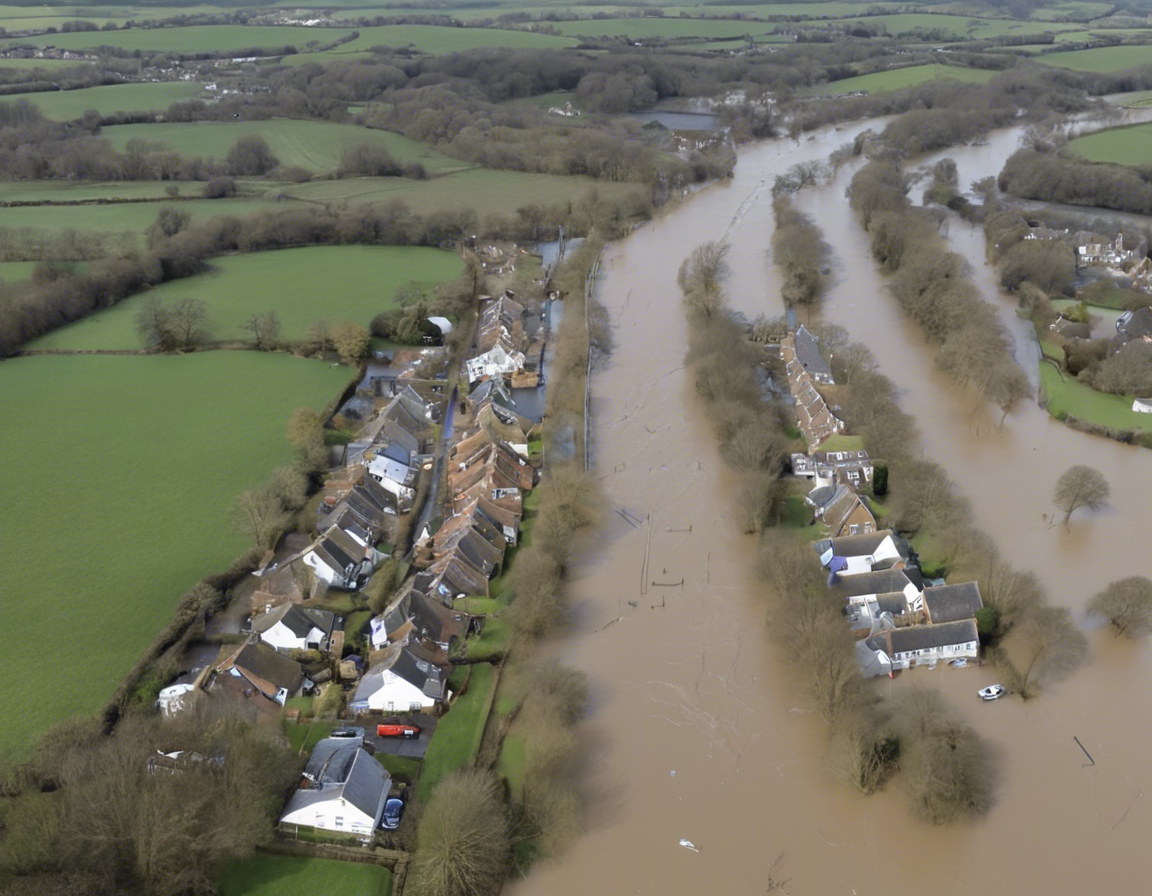Introduction
Severe flooding can pose a serious threat to communities and infrastructure, causing damage to property, disruption of daily life, and potential risks to human safety. West Sussex, a coastal county in England, is particularly vulnerable to flooding due to its proximity to the sea and its low-lying areas. In recent years, the frequency and intensity of extreme weather events, including heavy rainfall, have increased, exacerbating the risk of flooding in the region. In this article, we will explore strategies and measures for managing severe flooding in West Sussex to minimize damage and enhance resilience.
Understanding Flooding in West Sussex
West Sussex is home to several rivers, including the Arun, Adur, and Ouse, which are prone to overflowing during periods of heavy rain or storm surges. Urban development and changes in land use have also contributed to increased surface runoff and reduced natural absorption of water, further raising the risk of flooding in the region. Climate change is expected to amplify these challenges, leading to more frequent and severe flooding events in the future.
Risk Assessment and Early Warning Systems
Risk assessment is a crucial first step in managing flooding in West Sussex. Local authorities and environmental agencies conduct detailed assessments to identify areas at high risk of flooding and prioritize mitigation efforts. Advanced early warning systems are also essential for providing timely alerts to residents and emergency services. These systems utilize real-time data from weather stations, river gauges, and radar to forecast potential flood events and trigger evacuations or emergency response measures.
Infrastructure Upgrades and Flood Defenses
Investing in flood defenses and infrastructure upgrades is vital for reducing the impact of flooding in West Sussex. This includes the construction of barriers, embankments, and water storage facilities to divert or contain floodwaters. Natural flood management techniques, such as restoring wetlands, planting trees, and creating green spaces, can also help absorb excess water and reduce the risk of surface flooding. Additionally, retrofitting buildings with flood-resistant materials and implementing sustainable drainage systems can enhance resilience against future flood events.
Community Engagement and Response Planning
Community engagement plays a critical role in flood risk management in West Sussex. Local authorities work with residents, businesses, and community groups to raise awareness about flooding risks, provide guidance on emergency preparedness, and establish community emergency response teams. Developing flood response plans that outline roles, responsibilities, and communication protocols is essential for coordinating efforts during a flood event. Regular training exercises and simulations help test the effectiveness of these plans and ensure a coordinated response.
Collaboration and Partnership
Collaboration between various stakeholders, including government agencies, non-profit organizations, and private sector entities, is essential for effective flood risk management in West Sussex. Partnerships can facilitate the sharing of resources, expertise, and best practices, leading to more integrated and coordinated flood resilience efforts. Engaging with neighboring counties and regions is also important, as floods can transcend administrative boundaries and require cross-border cooperation to address effectively.
Building Back Better after Flooding
In the aftermath of a flood event, building back better is essential for enhancing the long-term resilience of communities in West Sussex. This involves building codes that incorporate flood-resilient design principles, promoting green infrastructure to mitigate future flood risks, and supporting community-led initiatives for sustainable flood management. Rebuilding efforts should prioritize resilience and adaptation, taking into account projected climate change impacts and lessons learned from past flood events.
Conclusion
Managing severe flooding in West Sussex requires a multi-faceted approach that combines risk assessment, early warning systems, infrastructure upgrades, community engagement, collaboration, and resilience-building measures. By adopting a comprehensive and strategic approach to flood risk management, the region can minimize the impact of flooding, protect lives and property, and safeguard the environment for future generations.
Frequently Asked Questions (FAQs)
- How can I prepare my home for potential flooding in West Sussex?
-
Elevate electrical outlets and appliances, install flood barriers or sandbags, and secure valuable items or documents in waterproof containers.
-
What should I do during a flood event in West Sussex?
-
Follow local authority advice, evacuate if instructed to do so, avoid walking or driving through floodwaters, and seek higher ground if trapped.
-
Are there financial assistance programs available for flood-affected residents in West Sussex?
-
Yes, the government and local authorities may offer grants, loans, or insurance schemes to support individuals and businesses impacted by flooding.
-
How can I contribute to flood resilience efforts in West Sussex?
-
Participate in community flood response teams, attend awareness-raising events, support local flood prevention projects, and advocate for sustainable land use practices.
-
What role do sustainable drainage systems play in mitigating flooding in West Sussex?
- Sustainable drainage systems, such as rain gardens and permeable paving, help absorb and filter rainwater, reducing surface runoff and lowering the risk of flooding in urban areas.
